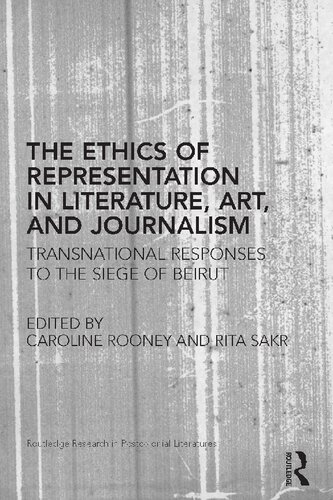

Most ebook files are in PDF format, so you can easily read them using various software such as Foxit Reader or directly on the Google Chrome browser.
Some ebook files are released by publishers in other formats such as .awz, .mobi, .epub, .fb2, etc. You may need to install specific software to read these formats on mobile/PC, such as Calibre.
Please read the tutorial at this link. https://ebooknice.com/page/post?id=faq
We offer FREE conversion to the popular formats you request; however, this may take some time. Therefore, right after payment, please email us, and we will try to provide the service as quickly as possible.
For some exceptional file formats or broken links (if any), please refrain from opening any disputes. Instead, email us first, and we will try to assist within a maximum of 6 hours.
EbookNice Team

Status:
Available4.4
17 reviewsThis transnational collection of essays, interviews, and creative pieces on the 1982 Siege of Beirut explores literary representations of the siege by a diverse set of writers alongside journalism and other media including film and art. The book investigates and promotes an awareness of an ethics of representation on questions of extreme emotional investment, comparing representations of the siege to representations of other traumatic events, visiting responses from those of different cultural backgrounds to the same event and considering implications with respect to comparative approaches. Chapters explore how literature, journalism and art contribute to overcoming the dangers of forgetting and denial, memorial excess and fundamentalism, the radicalization of violence, and the complete breakdown of trust on international levels, asking how they challenge geopolitical, intellectual, and psychological states of siege and instead promote awareness, acknowledgement, mourning, and justice across divided communities. The book extends the use of postcolonial methodologies affiliated with history, international relations, and psychoanalysis (memory, trauma) to Middle-Eastern studies, and visits the siege’s effect on different forms of memory and memorialization: selective memory, trauma, gaps and fissures in historical accounts, recording of eyewitness reports, and artistic re-imaginings and realizations of alternative archives.